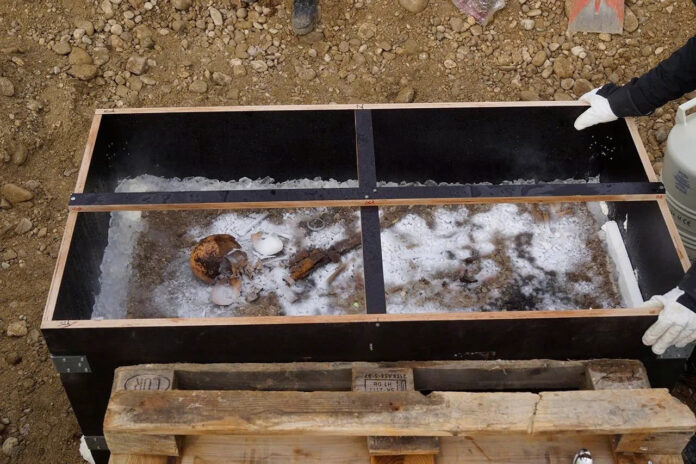In the quiet countryside of southern Germany, archaeologists have uncovered one of the most remarkable stories from the early medieval period. The discovery of a young child’s burial site has revealed not just ancient burial practices, but a touching tale of love, loss, and the lengths people would go to honor their departed.
A Precious Discovery Frozen in Time
The Archaeological Marvel
In 2021, researchers from the Bavarian State Office for Monument Preservation made an extraordinary discovery near the village of Mattsies in the Unterallgäu region. What they found would change our understanding of medieval burial practices and reveal the story of a child who has come to be known as the “Ice Prince of Mattsies.”
The burial site, dating back to between 670 and 680 CE, was found within what had once been a Roman villa. The archaeologists faced a unique challenge: how to preserve the delicate contents of this ancient grave without disturbing its precious artifacts.
Revolutionary Preservation Techniques

The team employed an innovative approach that had never been used before in such circumstances. They carefully shock-froze the entire burial chamber within a solid block of ice, allowing them to transport the grave intact to their laboratory in Bamberg for detailed study.
“This project has been a milestone,” explained Professor Mathias Pfeil, General Director of the Bavarian State Office for Monument Preservation. “The results of our investigation clearly demonstrate how much valuable information can be obtained from such a unique burial find when the right recovery methods and thorough analysis are applied.”
The Story of a Young Noble
A Life Cut Short
Through careful analysis of dental remains and DNA testing, researchers were able to piece together the story of this young child. The boy, estimated to be around 18 months old at the time of his passing, had striking blue eyes and light-colored hair. Evidence suggests he was born and raised in the same region where he was laid to rest.
Despite receiving the best care available at the time, including being breastfed—which was typically protective in early life—the child succumbed to complications from a chronic ear infection. Such conditions were unfortunately common causes of infant mortality in pre-modern societies, when medical treatments were limited.

Signs of High Social Status
The grave goods buried with the child tell a remarkable story of wealth and social position. The young boy was dressed in exceptionally fine clothing that spoke to his family’s elevated status in medieval society.
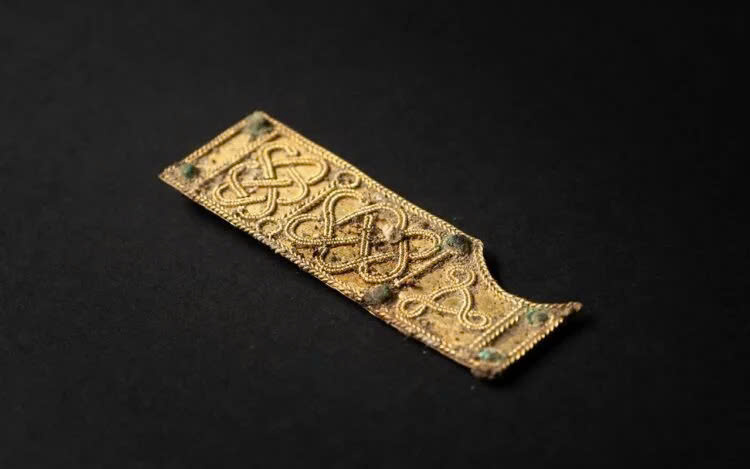
The Magnificent Burial Chamber
Extraordinary Craftsmanship
The burial chamber itself was a testament to the family’s devotion and resources. Constructed of stone and sealed with lime mortar—an expensive and labor-intensive technique for that era—the chamber was clearly built to last for eternity.
Evidence suggests the space was modified at least twice after the initial burial, indicating it served as a memorial site where family members could visit and remember their beloved child for years to come.
Precious Grave Goods
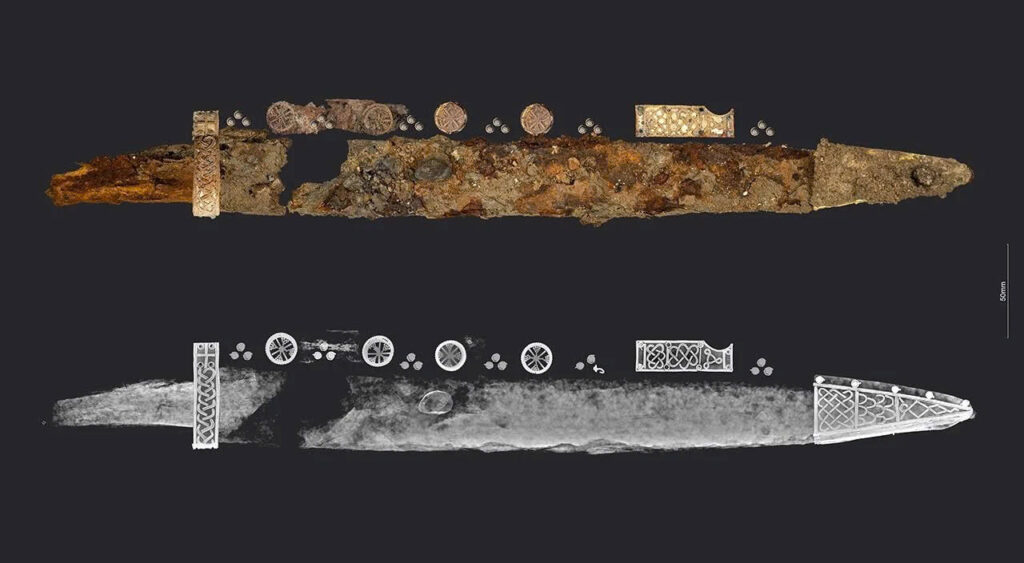
The items buried with the Ice Prince reveal the extraordinary care taken in his final journey:
Clothing and Personal Items:
- Finely crafted leather shoes and trousers
- A linen tunic with long sleeves, decorated with silk stripes imported through the Byzantine Empire
- Silver jewelry including bracelets and decorative spurs
- A ceremonial short sword in a leather scabbard with gold inlays
Religious and Symbolic Objects:
- A piece of cloth with two strips of gold foil arranged in a cross pattern, representing early Christian influence among the medieval elite
Funeral Feast Items:
- A bronze bowl and wooden vessel
- A silver-trimmed drinking cup
- Dried fruits including hazelnuts, apples, and pears
- Evidence of a funeral banquet with specially prepared foods
Cultural and Historical Significance
A Window into Medieval Life
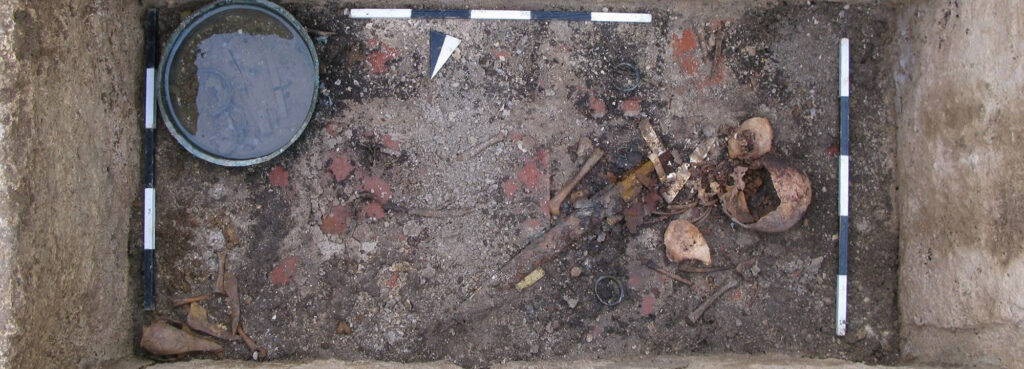
The Ice Prince’s burial provides unprecedented insight into the beliefs, customs, and social structures of early medieval society. The combination of Christian symbolism with traditional burial practices shows how religious beliefs were evolving during this transitional period in European history.
Video
The Power of Memory
Perhaps most touching is what this burial reveals about the universal human desire to honor and remember those we love. The elaborate preparations, expensive materials, and ongoing care of the memorial site demonstrate that the grief and love of parents transcends time and culture.
Legacy of the Ice Prince
Modern Archaeological Achievement
This discovery represents a significant advancement in archaeological methodology. The innovative preservation techniques used have opened new possibilities for studying delicate historical remains, potentially revolutionizing how future excavations are conducted.
Connecting Past and Present
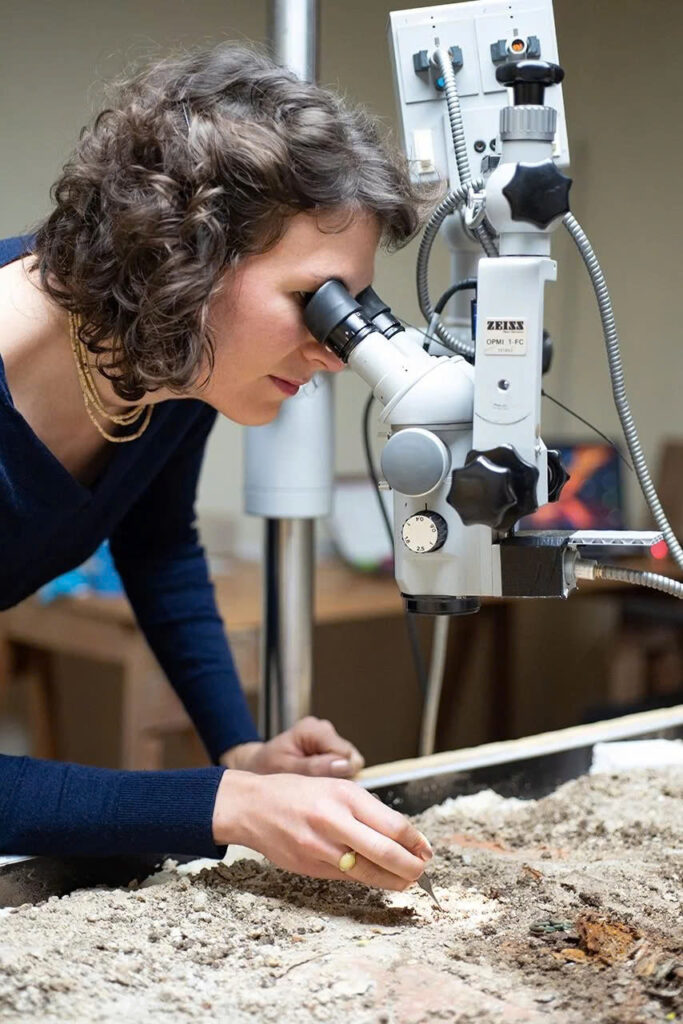
The story of the Ice Prince of Mattsies reminds us that behind every archaeological discovery lies a human story. This young child, who lived over 1,350 years ago, has become a bridge between our modern world and the medieval past, helping us understand the hopes, fears, and love that have always been part of the human experience.
Through careful scientific analysis and innovative preservation methods, archaeologists have not only saved a fragile piece of history but have also given voice to a story that might otherwise have been lost to time. The Ice Prince continues to teach us about medieval life, death, and the enduring power of human love and remembrance.
